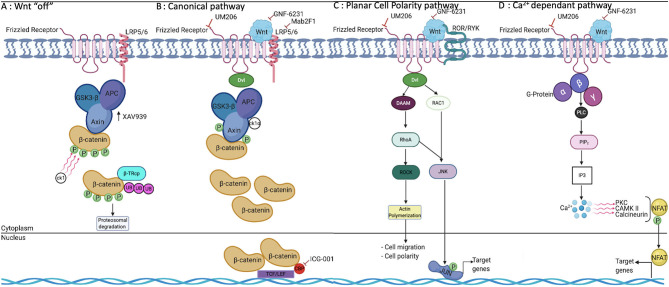Figure 1.
Wnt signaling pathways and their modulation by pharmacological molecules. (A) In the absence of Wnt, β-catenin is phosphorylated and degraded by the destruction complex. (B) β-catenin is accumulated in the cytoplasm and translocated to the nucleus, where it binds to TCF/LEF proteins, leading to the transcription of target genes. (C) PCP is one of two major non-canonical pathways and is involved in cell migration, motility, and polarity. (D) The Ca2+-dependant pathway involves the release of intracellular free calcium, which regulates a number of calcium-dependent signaling molecules, including PKC, CamKII, and the phosphatase calcineurin, which dephosphorylates NFAT. TCF, T cell factor; LEF, lymphoid enhancer factor; PKC, protein kinase C; CamKII, calmodulin kinase II; NFAT, Nuclear Factor of Activated T cells; PLC, Phospholipase C; IP3, inositol tri phosphate.

